Pressure Transmitters: From Ocean Depths to Space Heights, The Unsung Heroes of Precision
Imagine a world without pressure transmitters—where pressure is just a mysterious force we can't quite measure, like trying to guess the weight of an invisible elephant in the room. Fortunately, in our reality, we have these remarkable devices that turn the intangible power of pressure into something we can understand and control. From the depths of the ocean to the heights of the sky, pressure transmitters are our trusty pressure translators, ensuring that everything from your morning coffee maker to a spaceship launching into orbit runs smoothly. So, let's embark on a journey through the pressure-packed world of pressure transmitters, where we'll explore their types, applications, and the fascinating science behind measuring the invisible forces all around us. Get ready to dive deep and soar high as we unravel the mysteries of these unsung heroes of measurement!
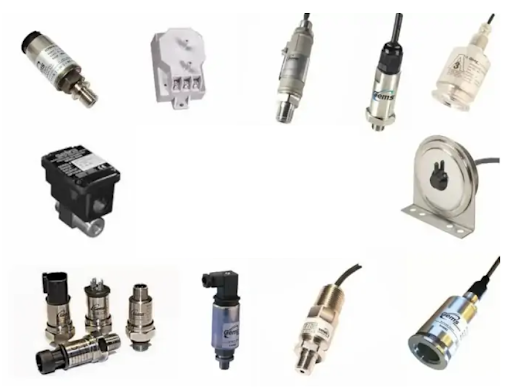
Fig 1. Pressure transmitter types
Pressure Transmitter Types
Pressure transmitters are crucial instruments used in various industrial processes to measure and transmit information about fluid or gas pressure. These devices come in different types to suit specific applications and requirements. One common type is the absolute pressure transmitter, which measures pressure relative to a perfect vacuum. Absolute pressure transmitters are often used in applications where the reference point is a total vacuum, such as in altitude measurements and some scientific experiments.
Another type is the gauge pressure transmitter, which measures pressure relative to atmospheric pressure. This type is widely used in applications like HVAC systems, industrial processes, and pressure monitoring in pipelines. Gauge pressure transmitters provide valuable information about the pressure difference between the process and the surrounding atmosphere.
Differential pressure transmitters are a third type and are designed to measure the difference in pressure between two points in a system. They find extensive use in applications like flow measurements, filter monitoring, and level monitoring in tanks. By comparing pressure at two different points, differential pressure transmitters help ensure proper functioning and safety in many industrial processes. Overall, the choice of pressure transmitter type depends on the specific application and the reference point against which pressure needs to be measured.
Pressure Transmitter Types Based on Appearance
Pressure transmitters can be categorized based on their appearance, although this categorization may not always align perfectly with their functionality. Here are some common types of pressure transmitters based on their appearance:
- Compact Transmitters: These pressure transmitters are small, compact, and often cylindrical. They are designed for easy integration into tight spaces and are commonly used in various industrial applications.
- Bulky Transmitters: Conversely, some pressure transmitters have a bulkier appearance. They may be larger and designed to withstand harsh environmental conditions, making them suitable for rugged industrial settings.
- Flush-Mounted Transmitters: These transmitters have a flush-mount appearance, meaning they are installed in such a way that the sensor is flush with the surface of the system or vessel being measured. This design minimizes the risk of damage or clogging, making them suitable for sanitary and hygienic applications.
- Submersible Transmitters: Submersible pressure transmitters are designed to be fully immersed in liquid. They typically have a waterproof, cylindrical appearance and are used for applications like water level measurement in wells, tanks, and rivers.
- Remote Seal Transmitters: Remote seal pressure transmitters consist of a sensor connected to the process fluid via a flexible capillary tube. The sensor may have a standard appearance, while the remote seal can take various forms, such as a diaphragm seal or bulb-shaped capsule.
- Compact and Modular Units: Some pressure transmitters come in a modular design, where the sensor unit can be separated from the electronics unit. This design allows for flexibility in installation and maintenance.
- Digital Displays: Pressure transmitters with built-in digital displays have a distinct appearance due to the presence of an LED or LCD screen. This display provides real-time pressure readings and may include additional information such as units and alarms.
- Hazardous Area Transmitters: Pressure transmitters designed for use in hazardous or explosive environments often have unique enclosures and appearance characteristics to meet safety requirements.
It's important to note that the appearance of a pressure transmitter is just one aspect, and the choice of a specific type should primarily be based on its compatibility with the application's requirements, including pressure range, accuracy, media compatibility, and environmental conditions.
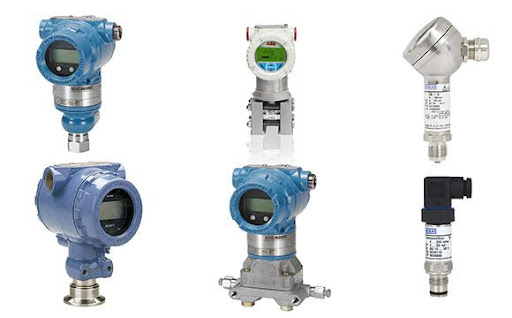
Fig 2. Pressure sensor types
Pressure Transmitter Types based on Pressure Range
Pressure transmitters can be categorized based on their pressure range, as different pressure ranges are suitable for various applications. Here are some common pressure transmitter types based on their pressure range:
Pressure Transmitter Types Based on Operation
Pressure transmitters can also be categorized based on their operation and how they convert pressure into electrical signals. Here are some common pressure transmitter types based on their operation:
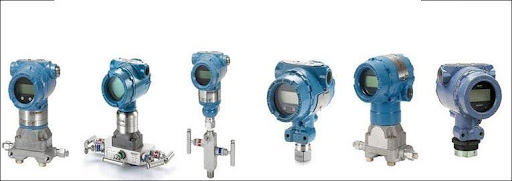
Fig 3. Different pressure transmitters
Pressure Transmitter Types Based on Signal Output
Pressure transmitters can be categorized based on their signal output types, which determine how pressure measurements are conveyed to external systems or devices. Here are some common pressure transmitter types based on their signal output:
Analog Output Pressure Transmitters:
Digital Output Pressure Transmitters:
Smart/Intelligent Pressure Transmitters:
Digital Display Pressure Transmitters:
Switch Output Pressure Transmitters:
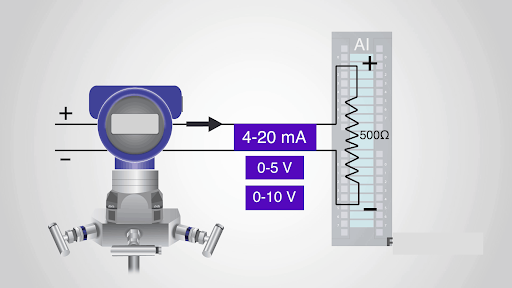
Fig 4. DP sensor signals
Pressure Transmitter Types Based on Application
Pressure transmitters come in various types and designs, each tailored to specific applications and industries. Here are some common pressure transmitter types based on their applications:
The choice of pressure transmitter type depends on the specific requirements of the application, including pressure range, accuracy, environmental conditions, and industry standards. Proper selection ensures that the pressure transmitter functions reliably and contributes to the efficiency and safety of the process or system.
What are the Pressure Transmitter Types?
Pressure transmitters come in several types, each designed for specific applications and pressure measurement requirements. The primary types of pressure transmitters include:
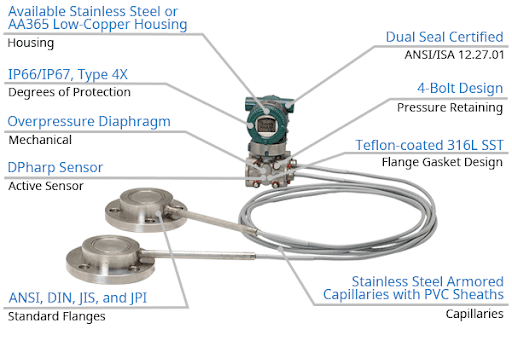
Fig 5. Diaphragm seal pressure sensor system
What is an Absolut Pressure Transmitter?
An absolute pressure transmitter is a type of pressure measurement device that measures pressure relative to a perfect vacuum, rather than measuring pressure relative to atmospheric pressure like a gauge pressure transmitter does. In other words, it provides a measurement of the total pressure exerted by a fluid or gas, including the pressure caused by the atmosphere itself.
The fundamental concept behind absolute pressure measurement is that it starts from zero pressure at a perfect vacuum and increases as pressure is applied by the measured fluid or gas. This type of transmitter is often used in applications where the reference point for pressure measurement is a complete absence of pressure, such as in altimeter instruments for measuring altitude or in scientific experiments that require exact pressure readings. By measuring pressure in this absolute manner, these transmitters provide accurate and consistent data that is not affected by variations in atmospheric pressure, making them suitable for a wide range of critical applications.
What are the Absolut Pressure Transmitter's applications?
Absolute pressure transmitters find applications in various industries and settings where precise and reliable pressure measurements are required. Some common applications include:
- Altitude Measurement: Absolute pressure transmitters are used in altimeters to determine the altitude of aircraft, spacecraft, and weather balloons. They measure the pressure difference between the atmospheric pressure at the measurement location and a reference pressure at sea level to calculate altitude.
- Vacuum Processes: In industries like semiconductor manufacturing, pharmaceuticals, and food processing, absolute pressure transmitters are used to monitor and control vacuum processes. They ensure the desired level of vacuum is maintained for specific manufacturing or research purposes.
- Scientific Experiments: Absolute pressure measurements are essential in laboratory experiments, especially when researchers need precise and consistent pressure data. They are used in various scientific fields, including chemistry, physics, and materials science.
- Barometric Pressure Measurement: Absolute pressure transmitters are employed in weather stations and meteorological instruments to measure barometric pressure, which is important for weather forecasting and climate research.
- Vacuum Furnaces: Industries such as metallurgy and materials processing use vacuum furnaces, where absolute pressure transmitters help maintain controlled environments for heat treatment, brazing, and other processes.
- Environmental Monitoring: Absolute pressure transmitters are used in environmental monitoring systems to measure air pressure, which can be an important factor in weather prediction and environmental research.
- Aerospace and Aviation: In aircraft, absolute pressure transmitters are used for various purposes, including altitude measurement, cabin pressure control, and flight data recording.
- High-Altitude Research Balloons: Scientific instruments on high-altitude research balloons rely on absolute pressure transmitters to measure atmospheric conditions at extreme altitudes.
- Deep-Sea Research: In underwater research and exploration, absolute pressure transmitters are used to measure the pressure at ocean depths. These measurements help scientists understand the ocean's characteristics and behavior.
- Vacuum Packaging: In the food industry, absolute pressure transmitters are used in vacuum packaging machines to monitor and control the level of vacuum inside packaging to extend the shelf life of food products.
These are just some of the many applications where absolute pressure transmitters play a crucial role in ensuring accurate and reliable pressure measurements, making them valuable tools across a wide range of industries and scientific endeavors.
What is a Gauge Pressure Transmitter?
A gauge pressure transmitter is a type of pressure measurement device designed to measure and transmit pressure readings relative to atmospheric pressure. It is commonly used in various industrial processes and applications where the pressure of a fluid or gas needs to be monitored or controlled with reference to the surrounding atmospheric pressure.
Key features and characteristics of a gauge pressure transmitter include
- Reference to Atmospheric Pressure: Gauge pressure transmitters measure the pressure above or below the local atmospheric pressure. A reading of 0 psi typically represents the same pressure as the surrounding atmosphere. Positive values indicate pressure above atmospheric pressure, while negative values represent pressure below atmospheric pressure.
- Common Applications: Gauge pressure transmitters are widely used in industries such as manufacturing, petrochemical, HVAC (Heating, Ventilation, and Air Conditioning), and automotive. They are employed in applications such as monitoring fluid levels in tanks, controlling industrial processes, measuring gas pressure in pipelines, and ensuring proper tire pressure in vehicles.
- Versatility: Gauge pressure transmitters are versatile instruments because they provide information about pressure variations relative to the environment, making them suitable for a wide range of applications. They are available in different pressure ranges and configurations to match specific operational requirements.
- Output Signals: These transmitters typically produce analog output signals, such as 4-20 mA or 0-10 VDC, which can be transmitted to control systems, data acquisition systems, or display devices for monitoring and control purposes.
- Accuracy and Calibration: Gauge pressure transmitters are designed to provide accurate and reliable pressure measurements. Calibration is essential to ensure their precision, and they may need periodic calibration checks to maintain accuracy.
In summary, a gauge pressure transmitter is a vital instrument in industrial processes and systems where pressure monitoring is crucial. It provides information about the pressure of a fluid or gas relative to the local atmospheric pressure, making it a valuable tool for maintaining safe and efficient operations in various applications.
What is the Gauge Pressure Transmitter Used for?
Gauge pressure transmitters are used in a wide range of industrial and commercial applications where the measurement and monitoring of pressure relative to atmospheric pressure is essential. Here are some common uses of gauge pressure transmitters:
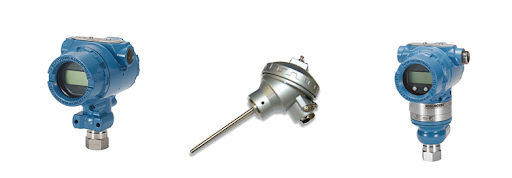
Fig 6. Different pressure sensor types
Differential Pressure Transmitters
Differential pressure transmitters are specialized pressure measurement devices that measure the difference in pressure between two points in a system. They are widely used in various industrial applications where monitoring and controlling pressure differentials are critical. Here's a closer look at differential pressure transmitters:
- Principle of Operation: Differential pressure transmitters work on the principle that when a fluid or gas flows through a system, it generates a pressure difference between two points. These transmitters have two ports connected to the points where the pressure difference needs to be measured. By comparing the pressure at these two points, they provide an output signal proportional to the differential pressure.
- Applications: Differential pressure transmitters have a wide range of applications, including:
- Flow Measurement: They are commonly used in flow measurement systems, such as in the measurement of fluid flow in pipelines or HVAC ducts. By measuring the pressure drop across an obstruction (e.g., an orifice plate), they can calculate the flow rate.
- Level Measurement: In tanks or vessels, differential pressure transmitters can measure the level of a liquid by comparing the pressure at the bottom of the vessel to the pressure at the top.
- Filter and Strainer Monitoring: They are used to monitor the pressure drop across filters, strainers, or screens in industrial processes. An increase in pressure differential may indicate the need for maintenance or replacement.
- Pressure Control: In some cases, differential pressure transmitters are used to control pressure by maintaining a specific differential across a control valve or regulator.
- Density and Viscosity Measurement: In certain applications, changes in fluid density or viscosity can affect the pressure differential, allowing for indirect measurements of these properties.
- Output Signals: These transmitters typically provide analog output signals (e.g., 4-20 mA or 0-10 VDC) that can be interfaced with control systems, data acquisition systems, or displays for monitoring and control purposes.
- Accuracy and Calibration: Like all pressure measurement instruments, differential pressure transmitters require calibration to ensure accuracy. Calibration is essential because the relationship between pressure difference and the output signal can vary over time and with environmental conditions.
- Variety of Configurations: Differential pressure transmitters come in various configurations, including diaphragm-based and capacitive sensors, and they are available in different pressure ranges to suit specific application requirements.
In summary, differential pressure transmitters are essential tools in industrial and engineering processes where precise measurement and control of pressure differences are needed. Their versatility and reliability make them invaluable in applications ranging from flow measurement to level control and beyond.
What is the Differential Pressure Transmitter Usage?
Differential pressure transmitters have a wide range of applications across various industries where the measurement and control of pressure differences are crucial. Here are some common usages of differential pressure transmitters:
- Flow Measurement: One of the primary applications of differential pressure transmitters is flow measurement. They are used in systems such as pipelines, HVAC ducts, and industrial processes to measure the flow rate of liquids or gases. By measuring the pressure drop across an obstruction, such as an orifice plate or venturi tube, the transmitter can calculate the flow rate accurately.
- Level Measurement: Differential pressure transmitters are employed in tanks and vessels to measure the level of a liquid. By comparing the pressure at the bottom of the vessel with the pressure at the top, these transmitters provide continuous level readings, which are crucial for inventory management and process control.
- Filter and Strainer Monitoring: In industrial processes, filters, strainers, and screens are used to remove impurities from fluids. Differential pressure transmitters are used to monitor the pressure drop across these filtration devices. An increase in pressure differential indicates that the filter or strainer may be clogged and in need of maintenance or replacement.
- Pressure Control: Some industrial processes require precise pressure control. Differential pressure transmitters are used in these systems to maintain a specific pressure difference between two points. For example, they can control the pressure across a control valve or regulator to ensure optimal system performance.
- Density and Viscosity Measurement: Changes in fluid density or viscosity can affect the pressure differential across certain types of flow meters or sensors. Differential pressure transmitters can be used to indirectly measure these properties, providing valuable information in various chemical and petrochemical processes.
- Hydraulic Systems: In hydraulic systems used in construction equipment, industrial machinery, and aircraft, differential pressure transmitters help monitor and control pressure differences in hydraulic circuits, ensuring the proper functioning of these systems.
- Environmental Monitoring: Differential pressure transmitters are used in weather stations and environmental monitoring systems to measure barometric pressure, which is essential for weather forecasting and climate research.
- Biomedical Applications: In some medical devices and laboratory equipment, differential pressure transmitters are used to measure pressure differences in fluidic systems or to monitor changes in gas pressure.
- Research and Development: Researchers and scientists use differential pressure transmitters in various experiments and studies where precise pressure measurements are required, such as in fluid dynamics research.
- Water Treatment: In water treatment plants, these transmitters are used to monitor and control the pressure difference across membranes and filtration systems, ensuring the effective removal of impurities from water.
These are just a few examples of the many applications of differential pressure transmitters. Their versatility and ability to provide accurate and reliable pressure differential measurements make them indispensable tools in various industries and processes.
Vacuum Pressure Transmitters
Vacuum pressure transmitters are specialized pressure measurement devices designed to accurately measure pressures in vacuum or low-pressure environments. These transmitters are used in applications where pressures are significantly below atmospheric pressure, such as in vacuum chambers, vacuum pumps, and various scientific and industrial processes. Vacuum pressure transmitters typically have a measurement range that starts from just above absolute zero pressure and extends down to very low pressures, allowing for precise monitoring and control of vacuum levels. They play a critical role in ensuring the efficiency and reliability of vacuum systems, as well as in applications like vacuum furnaces, semiconductor manufacturing, and aerospace where precise vacuum pressure measurements are essential for process control and product quality.
High-Pressure Transmitters
High-pressure transmitters are specialized instruments designed to measure and monitor extremely elevated pressures in industrial processes and systems. These transmitters are crucial for applications where precision pressure measurement is essential for safety, performance, and quality control. They are commonly employed in industries such as oil and gas, petrochemical, aerospace, and hydraulic systems, where pressures can reach extraordinarily high levels. High-pressure transmitters are constructed with robust materials and engineering to withstand the intense forces associated with these environments, ensuring reliability and accuracy in pressure measurement.
One of the primary features of high-pressure transmitters is their ability to provide accurate readings within the high-pressure range. They are available in various pressure ratings to suit different applications, from moderately high pressures to extremely high pressures. These transmitters are equipped with durable diaphragms and seals designed to prevent leaks and maintain measurement accuracy under the immense stress exerted by high-pressure conditions. This reliability is essential for ensuring the safe and efficient operation of equipment, processes, and systems subjected to elevated pressures, helping industries meet stringent safety and quality standards.
Digital Pressure Transmitters
Digital pressure transmitters are advanced pressure measurement devices equipped with digital output signals, making them well-suited for modern industrial processes and automation systems. Unlike analog pressure transmitters, they convert pressure readings into digital formats, such as digital codes or communication protocols like HART, Foundation Fieldbus, or Profibus, allowing for seamless integration into digital control networks. These transmitters offer benefits such as enhanced accuracy, real-time diagnostics, and remote monitoring capabilities, making them ideal for applications where precise pressure measurement, control, and data management are critical. Digital pressure transmitters find wide use in industries like manufacturing, petrochemical, and process automation, offering efficient and reliable solutions for pressure monitoring and control in complex systems.
Sealed Pressure Transmitters
Sealed pressure transmitters are a type of pressure measurement device designed to measure pressure relative to a sealed reference chamber within the device itself. They are commonly used in applications where the reference point for pressure measurement is a sealed or closed environment rather than atmospheric pressure. Here are some key features and applications of sealed pressure transmitters:
Key Features:
- Sealed Reference Chamber: Sealed pressure transmitters have a reference chamber that is sealed or isolated from the external environment. This reference chamber serves as the reference point against which pressure measurements are made.
- Pressure Measurement: These transmitters measure the pressure applied to the sensing element or diaphragm relative to the pressure in the sealed reference chamber. The difference between these pressures is the measured pressure.
- Applications: Sealed pressure transmitters are used in a variety of applications, including:
- Submersible Depth Measurement: They are commonly used in submersible pumps and tanks to measure the depth of liquid. By sealing the reference chamber, they can provide accurate depth measurements even when submerged.
- Pressure Measurement in Sealed Vessels: In applications where pressure is contained within sealed vessels or enclosures, sealed pressure transmitters can accurately measure the internal pressure.
- Medical Devices: Sealed pressure transmitters are used in medical equipment and devices like infusion pumps and ventilators to measure and control pressure in closed fluid systems.
- Aircraft and Aerospace: In aviation and aerospace applications, sealed pressure transmitters are used to measure cabin pressure, altitude, and other critical parameters.
- Environmental Monitoring: They are used in weather stations and environmental monitoring systems to measure atmospheric pressure without being affected by external conditions.
Advantages:
- Accuracy: Sealed pressure transmitters provide accurate and stable pressure measurements because they are less susceptible to changes in atmospheric pressure or environmental conditions.
- Versatility: They can be used in a wide range of environments and applications, making them versatile instruments for pressure measurement.
- Durability: Sealed pressure transmitters are designed to withstand harsh conditions and are often used in rugged industrial and outdoor settings.
Considerations:
- Calibration: Like all pressure measurement devices, sealed pressure transmitters require periodic calibration to ensure accuracy.
- Application Compatibility: When selecting a sealed pressure transmitter, it's essential to choose one that is compatible with the specific application requirements, including the pressure range and the type of media being measured.
In summary, sealed pressure transmitters are valuable tools in applications where pressure needs to be measured within sealed or closed environments. Their ability to provide accurate and reliable pressure measurements in such conditions makes them essential in various industries, including manufacturing, aerospace, medical, and environmental monitoring.
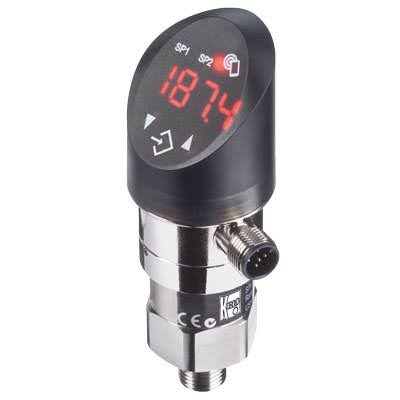
Fig 7. Digital pressure transmitter
Compound Pressure Transmitters
Compound pressure transmitters are a type of pressure measurement device designed to measure both positive and negative pressure variations relative to atmospheric pressure. These transmitters are versatile and can provide pressure readings that cover a wide range, including pressures both above and below atmospheric pressure. Here are some key features and applications of compound pressure transmitters:
Key Features:
- Dual Measurement: Compound pressure transmitters are equipped to measure both positive and negative pressures. Positive readings indicate pressure above atmospheric pressure, while negative readings indicate pressure below atmospheric pressure.
- Reference to Atmospheric Pressure: The reference point for these transmitters is the local atmospheric pressure, ensuring that they can measure pressure variations accurately, regardless of changes in atmospheric conditions.
- Applications: Compound pressure transmitters are used in applications where pressure measurements may fluctuate on either side of atmospheric pressure, such as:
- Pressure Control Systems: They are utilized in systems that require precise control of pressure, particularly when pressure variations may occur above or below atmospheric pressure.
- Altitude Measurement: In aviation and aerospace, compound pressure transmitters are used to determine altitude by measuring the pressure difference between the aircraft's internal pressure and the surrounding atmospheric pressure.
- Vacuum and Pressure Systems: These transmitters are suitable for applications involving vacuum pumps, vacuum chambers, and systems that switch between positive and negative pressure conditions.
- Environmental Monitoring: They are used in weather stations and barometric pressure sensors to measure and record atmospheric pressure for weather forecasting and climate studies.
Advantages:
- Wide Pressure Range: Compound pressure transmitters offer a broad measurement range that includes both positive and negative pressures, making them suitable for various applications.
- Accuracy: They provide accurate pressure measurements by referencing the local atmospheric pressure, minimizing errors due to atmospheric variations.
Considerations:
- Calibration: Like all pressure measurement instruments, compound pressure transmitters require calibration to maintain accuracy, particularly when used in critical applications.
- Application Compatibility: Selecting the right compound pressure transmitter involves considering factors such as pressure range, environmental conditions, and the specific requirements of the application.
In summary, compound pressure transmitters are valuable instruments for applications where pressure measurements can fluctuate above and below atmospheric pressure. Their ability to accurately measure both positive and negative pressures makes them essential in industries like aerospace, environmental monitoring, and systems where precise pressure control is necessary.
Low-Pressure Transmitters
Low-pressure transmitters are specialized pressure measurement devices designed to accurately measure and monitor pressures in applications where pressure levels are very low. These transmitters are crucial for industries and systems that require precision in measuring and controlling low-pressure conditions. Here are some key features and applications of low-pressure transmitters:
Key Features:
- Sensitivity to Low Pressure: Low-pressure transmitters are designed to provide accurate measurements in pressure ranges significantly below atmospheric pressure, typically in the range of millibars (mbar) or inches of water column (inH2O).
- Precision: These transmitters offer high precision and sensitivity, making them suitable for applications where even slight pressure variations are critical.
- Low-Pressure Gases: They are used for measuring the pressure of gases that operate at low pressures, such as natural gas distribution systems, medical gas systems, and vacuum processes.
- Environmental Monitoring: Low-pressure transmitters play a role in environmental monitoring equipment, measuring air pressure variations in cleanrooms, laboratories, and other controlled environments.
Applications:
- Medical Devices: Low-pressure transmitters are used in various medical devices, including respiratory therapy equipment, ventilators, and anesthesia machines, where accurate pressure control is vital.
- Cleanroom and Laboratory Applications: They are employed in cleanrooms and laboratories to monitor and control air pressure differentials, ensuring the maintenance of clean and controlled environments.
- Vacuum Systems: Low-pressure transmitters are used in vacuum chambers, vacuum packaging machines, and vacuum processes, where precise measurement of low pressures is essential.
- Flow Measurement: In some applications, low-pressure transmitters are used to measure gas flow rates where the pressure drop across a flow element is minimal.
- Aircraft and Aerospace: In aerospace applications, they are used in aircraft altimeters to measure altitude based on air pressure variations at different altitudes.
- Industrial Gas Monitoring: Low-pressure transmitters are used in industries that handle gases at low pressures, such as gas distribution and gas leak detection systems.
Advantages:
- High Sensitivity: Low-pressure transmitters offer excellent sensitivity to low-pressure changes, making them suitable for applications with fine pressure adjustments.
- Accuracy: They provide precise pressure measurements even at very low-pressure levels, ensuring safety and reliability in critical applications.
Considerations:
- Calibration: Like all pressure measurement instruments, low-pressure transmitters require periodic calibration to maintain accuracy.
- Application Compatibility: When selecting a low-pressure transmitter, it's essential to choose one that matches the specific pressure range and requirements of the application.
In summary, low-pressure transmitters are essential instruments for applications where precise measurement and control of low-pressure conditions are critical. Their high sensitivity and accuracy make them invaluable in industries such as healthcare, environmental monitoring, and cleanroom operations, as well as in applications involving low-pressure gases and vacuum systems.
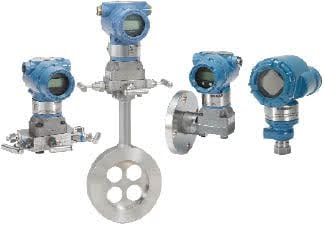
Fig 8. Different types of pressure sensors
Important Tips Should be Observed While Choosing a Pressure Transmitter
Selecting the right pressure transmitter is crucial for accurate and reliable pressure measurement in various applications. Here are some important tips to observe when choosing a pressure transmitter:
Conclusion
In conclusion, pressure transmitters are essential instruments used in a wide range of industrial, commercial, and scientific applications to measure and monitor pressure variations accurately. Understanding the specific requirements of your application, including pressure type, range, accuracy, environmental conditions, and compatibility, is crucial in selecting the right pressure transmitter. Additionally, considering factors such as output signal, media compatibility, certifications, and calibration and maintenance requirements ensures that the chosen transmitter meets your needs effectively. Consulting with experts and conducting testing or validation when possible further enhances the likelihood of a successful pressure transmitter selection. Ultimately, choosing the appropriate pressure transmitter contributes to the efficiency, safety, and reliability of various processes and systems.
To Recap
1. What is a pressure transmitter, and what does it measure?
Answer: A pressure transmitter is a device that measures and converts pressure into an electrical signal. It measures the force per unit area exerted by a fluid (liquid or gas) on a surface and provides a corresponding output, often in the form of an electrical signal.
2. What are the common types of pressure transmitters?
Answer: Common types of pressure transmitters include gauge pressure transmitters, absolute pressure transmitters, differential pressure transmitters, sealed pressure transmitters, vacuum pressure transmitters, compound pressure transmitters, high-pressure transmitters, low-pressure transmitters, digital pressure transmitters, and smart/intelligent pressure transmitters.
3. What is the difference between gauge pressure and absolute pressure transmitters?
Answer: Gauge pressure transmitters measure pressure relative to atmospheric pressure, while absolute pressure transmitters measure pressure relative to a perfect vacuum (zero pressure). Gauge pressure readings can be positive or negative, depending on whether the pressure is above or below atmospheric pressure, while absolute pressure readings are always positive.
4. When should I use a differential pressure transmitter?
Answer: Differential pressure transmitters are used when you need to measure the difference in pressure between two points in a system. They are commonly used in flow measurement, level measurement, and applications where pressure differentials are critical.
5. What are sealed pressure transmitters used for?
Answer: Sealed pressure transmitters are used to measure pressure relative to a sealed reference chamber within the device. They are commonly used in submersible depth measurement, pressure measurement in sealed vessels, and applications where the reference point is a sealed environment.
6. In which industries are high-pressure transmitters commonly used?
Answer: High-pressure transmitters find applications in industries such as hydraulic systems, pressurized vessels, oil and gas, aerospace, and industrial machinery, where pressures can reach extremely high levels.
7. What are some typical applications for low-pressure transmitters?
Answer: Low-pressure transmitters are used in applications such as medical devices (e.g., ventilators), cleanroom pressure control, vacuum systems, and monitoring low-pressure gases.
8. What is the advantage of using digital pressure transmitters over analog ones?
Answer: Digital pressure transmitters offer advantages such as higher accuracy, real-time diagnostics, remote monitoring capabilities, and compatibility with digital control networks, making them suitable for modern industrial processes and automation systems.
9. What factors should be considered when choosing a pressure transmitter?
Answer: Factors to consider include pressure type, range, accuracy, environmental conditions, output signal, media compatibility, certifications, calibration and maintenance requirements, budget, and consultation with experts.
10. How often should pressure transmitters be calibrated?
Answer: The calibration frequency depends on factors like the application's criticality, manufacturer recommendations, and industry standards. Generally, pressure transmitters should undergo regular calibration to maintain accuracy, with intervals ranging from months to years, depending on the application's requirements.
References
https://www.transmittershop.com/blog/factors-of-consideration-when-choosing-pressure-transmitters/
https://sabadejlah.com/what-is-a-pressure-transmitter/
https://www.appeng.co.uk/blog/what-are-the-different-types-of-pressure-transducer/
https://www.transmittershop.com/blog/look-various-types-industrial-transmitters-part-ii/
https://www.chemengonline.com/pressure-transmitter-basics-selection-guidelines/
https://shoptransmitter.com/blog/pressure-transmitter-basics-types-functions-and-working-principle/
Recent Posts
-
Booster Pump Troubleshooting and Maintenance: How to Fix and Prevent Common Issues
1. Introduction Imagine turning on your faucet only to be greeted with a weak trickle of water when …22nd Apr 2025 -
Energy-Efficient Booster Pumps: Selection and Tips for Maximizing Performance
1. Introduction Imagine never having to deal with fluctuating water pressure, noisy pumps, or skyroc …19th Apr 2025 -
Booster Pumps for Sustainable Water Systems: Irrigation and Rainwater Harvesting Solutions
1. Introduction Water scarcity is no longer a distant threat—it’s a reality affecti …16th Apr 2025




